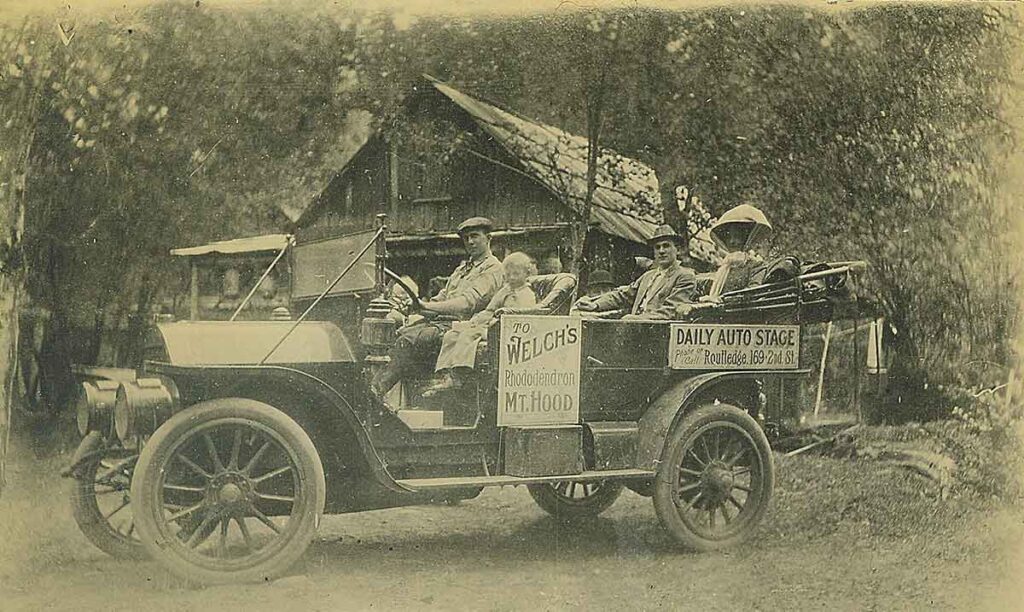In the early 20th century, long before travelers zipped up Highway 26 to the ski lifts and resorts of Mount Hood, the trip to the mountain was rugged and uncertain. The road, built on the bones of the old Barlow Trail, was steep, narrow, and either muddy or dusty depending on the season.

